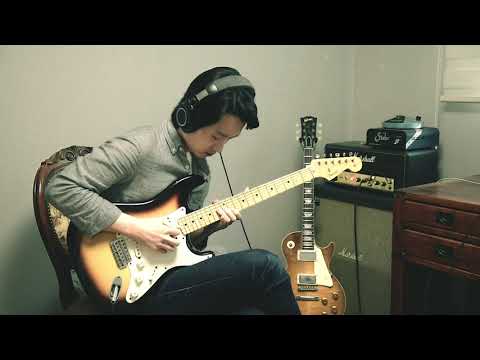Makes sense that you would be invested in its interpretation since you call it an important theme while I hardly considered it a theme at all, even if theory says it may be.
In the way I play, there is no “should” as long as I like it and it sounds fine, even if different. As long as I am okay with that I’m not too invested in how theory says I should play. It’s rather interesting that this stuff comes back should you mention it but at the time it was a tonal choice and I had no idea we’d be discussing this microscopically months down the road.
I would in fact just love to admit I heard it wrong and played it wrong and give you the satisfaction and closure (since it would answer the question) but aside from that I don’t know what else to offer as an explanation for those chords.
I get the feeling that you’re not satisfied with my pedestrian answer but really there is nothing more substantial than the reason that I wanted to play them differently and I liked them enough to move on. And at the time, the theoretical distinction between these two things were the last thing on my mind. I suspect such dilemmas will be treated with the same level of indifference should a similar situation arise in the future.
Probably worse sins are committed in my cover of Pavilion but I would do it all the same. That’s just how I am. I probably commit grave sins regarding efficient picking and digit cycling (I hear that’s a thing too) as well because well, I gravitate towards them for some odd non-theoretical reason.
Of course, people are free to dislike that and prefer other things. I have no problem with that at all. Where I might raise a slight objection with that is the assumption that the reason for being different was due to a blatant disregard for theory or an attempt to sabotage the original, or that I couldn’t hear it. I heard it very well then and I hear it even better now 



